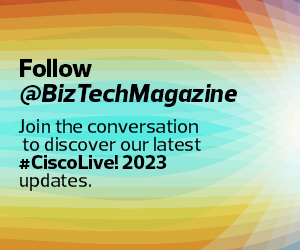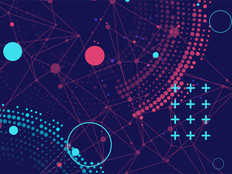For many organizations, the human side of managing IT environments is proving just as daunting as the keeping on top of the technology itself: According to a survey by staffing firm Manpower, 78 percent of organizations said they’re having a difficult time filling open technology roles.
That’s a problem that will likely get worse. As the world becomes more sophisticated and technologies such as artificial intelligence gain prominence, the right technical skills will become even harder to find.
One solution, says Stephanie Hagopian, vice president of physical and cybersecurity solutions at CDW, is to work harder to create diverse workforces and develop inclusive corporate cultures. If employers broaden the pool from which they hire while striving to upskill existing employees and retain them longer, they’ll reduce their own talent shortages.
Hagopian made her case during a session at Cisco Live 2023, the large conference of Cisco customers, partners, analysts, journalists and others that took place recently in Las Vegas.
“From my perspective, there’s a human angle. It’s just the right thing do,” she said. “But beyond that, there have been a lot of studies showing the business benefits. Employees are a lot more likely to stick around longer if they feel like they’re part of the team and they have a voice. Second, there are revenue impacts. Companies do better financially when they proactively create diversity. And third, there’s just more innovation: Diverse teams do better things.”
Click the banner below to follow our coverage after the Cisco Live 2023 event as an Insider.
How to Hire from a More Diverse Candidate Pool
Most organizations agree that diversity delivers business benefits. But getting there can be difficult. Hagopian said that businesses need to think creatively about how to find diverse talent and learn to manage that talent inclusively.
For example, she said, they should think carefully about the kinds of experience and educational backgrounds they require when hiring certain positions. Someone with a less technical background may be an excellent long-term candidate, even if they need a bit more training. Finding people who are good cultural fits can be just as important as particular technical skills, she said.
READ MORE: How will AI affect cybersecurity in coming years?
“We have a lot of people on my team who aren’t traditional computer science majors,” Hagopian said. “We don’t believe there’s a one-size approach to filling roles on our team.”
And while artificial intelligence tools have their place in human resource, she urged against using AI tools designed to filter candidates out. These have been shown to be biased against women, people of color and candidates from nontraditional backgrounds.
“We don’t do that, intentionally, because we don’t want to filter out good candidates who don’t meet an algorithm,” she said. “There’s also some racism and sexism that can be built into those systems.”
Worker Retention Leads to Greater Diversity, and Vice Versa
Inclusive management is just as important to building a diverse culture as creative recruiting. With tech talent in short supply, businesses must often work harder to retain their talent than they do to find it.
To that end, Hagopian noted several tactics she employs in running her own team. For one, she conducts regular all-hands meetings where employees at all levels are singled out for outstanding work, and efforts are made to include workers who might normally be overlooked.
“Everyone’s working very hard, and you sometime feel like you’re lost in the shuffle,” she said, so she makes sure to ask for suggestions on how to achieve an objective and then includes those who makes suggestions in the follow-up process.
EXPLORE: How women can help solve the cyber staffing shortage.
She also makes careful use of collaboration technology, such as Cisco Webex, to ensure remote meetings are inclusive. Employee retention has become even more difficult in the era of digital work because work feels more transactional and less personal. It’s simply harder to feel like you’re part of a culture while sitting alone in your home, so Hagopian pays careful attention to the faces on her video meetings.
“I can tell when someone is on video and they’re just not happy,” she said. Businesses that use Webex can also get data on things such as how often employees attend meetings and how often they appear on video.
Moreover, she strives to flatten the internal organizational chart. “I think it’s really bad when a company creates a hierarchy where they send a message, ‘You can’t ever go beyond the person you directly report to.’ I think you need to have everybody talking to everybody.”
To access all of our coverage of Cisco Live, follow us on Twitter at @BizTechMagazine and the official conference Twitter account, @CiscoLive, and join the conversation using hashtag #CiscoLive.













